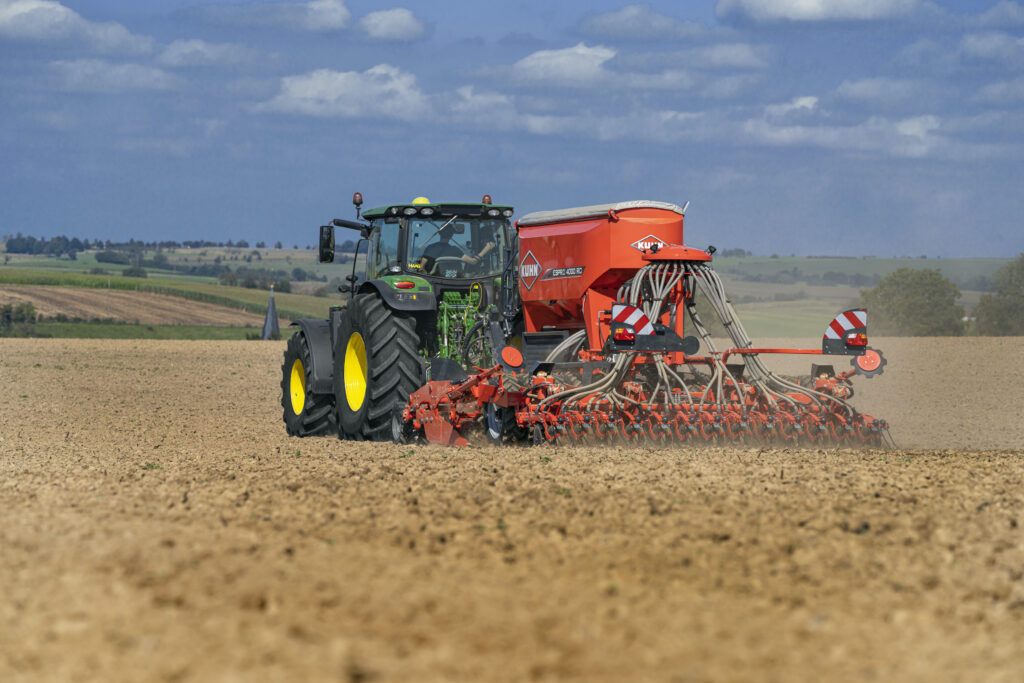New ‘boots-on-the-ground’ precision farming service
A new service makes the benefits of precision farming accessible without growers having to master all its complexities, says ProCam’s UK Technical and Services Manager, Simon Francis.
Using satellite mapping of soil and crop variability across fields, the new FieldSense service derives tailored variable rate input applications to improve economic crop output across the field and bring environmental gains.
However, what makes FieldSense particularly appealing is that the system is based on a collaborative approach between the agronomist and grower.
It will be the ProCam agronomist who makes sense of the field data, drawing on their boots-on-the-ground experience of the field and ground-truthing any anomalies that the data might reveal. This can be combined with the farmer’s own knowledge of the field as necessary. Once the data has been interpreted, the agronomist will produce variable rate files for downloading directly to the tractor that is controlling the drill or fertiliser applicator. It is precision agronomy through partnership.
Growers can also cherry pick only those parts of the package relevant to their farm and machinery and can begin by trying FieldSense over just a few hectares.
This first phase launch will focus on four key areas for combinable cropping: grid-based soil sampling; variable rate seeding; variable rate nitrogen, phosphate, potash and lime applications; and yield mapping input.
The process starts by mapping fields into various sized grids – for example one hectare squares for soil sampling, 24 metres squared grids for variable rate fertiliser spreading, and 6 metres squared grids for variable rate drilling, or the most appropriate grid size tailored for the width of machine.
The variable rate drilling package in FieldSense uses historical field performance maps to show the variations in crop biomass that have occurred in that field over multiple years. From these, the agronomist will create a variable seed rate plan – to drill proportionally more seed in historically lower biomass grid squares and less seed where needed – with the aim of achieving a uniform, optimum tiller density over the whole field.
In one test, we’ve found that almost double the seed rate was needed in poorer areas of a field to bring tiller numbers back up towards the better areas. Without this knowledge, poorer areas would have been drilled at sub-optimal density, risking sub-optimal yield.

For soil sampling, the location of where samples were taken from in each hectare is captured by GPS and shared back to the FieldSense platform. Samples can be analysed using ProCam’s SoilSense service, with the resulting gridded nutrient maps used by the agronomist to create variable rate spreading files to correct phosphate and potash deficiencies, and for liming if required.
Variable rate nitrogen application, on the other hand, uses satellite NDVI measurements of the growing crop. These are taken every five to seven days on a 10m x 10m grid or every three to five days on a 3m x 3m grid. Here, the aim is to use variable rate nitrogen to produce the optimum green area index (GAI) over the whole field. Farm-testing in oilseed rape where GAI in March was found to vary from a near optimum of 3.0 to just 1.0, showed that by varying nitrogen between 60 and 90 kg/ha, crop uniformity was corrected by early June.
In fields where yield mapping is carried out on the combine harvester, yield data can also be uploaded into FieldSense to guide future agronomic decisions.

The launch of FieldSense is the latest in a sequence of technical introductions from ProCam, following on from the launch of the soil testing and nutrient planning service, SoilSense, last year.
Growers face increasingly heavy workloads and pressures from legislation and environmental scrutiny, while at the same time, farm profits are volatile and under pressure.
FieldSense provides a way for ProCam agronomists to take some of the complexity out of precision farming for growers, while bringing greater accuracy to agronomic decisions. In the case of variable rate application of nutrients, there are also potential SFI payments available of £27/ha.
In essence, FieldSense offers focused use of key inputs for optimum crop output through partnership, technology and boots-on-the-ground collaboration. Satellite image field maps are one element of precision farming, but they are just the start. They need underpinning with solid field experience to interpret and make sense of them.